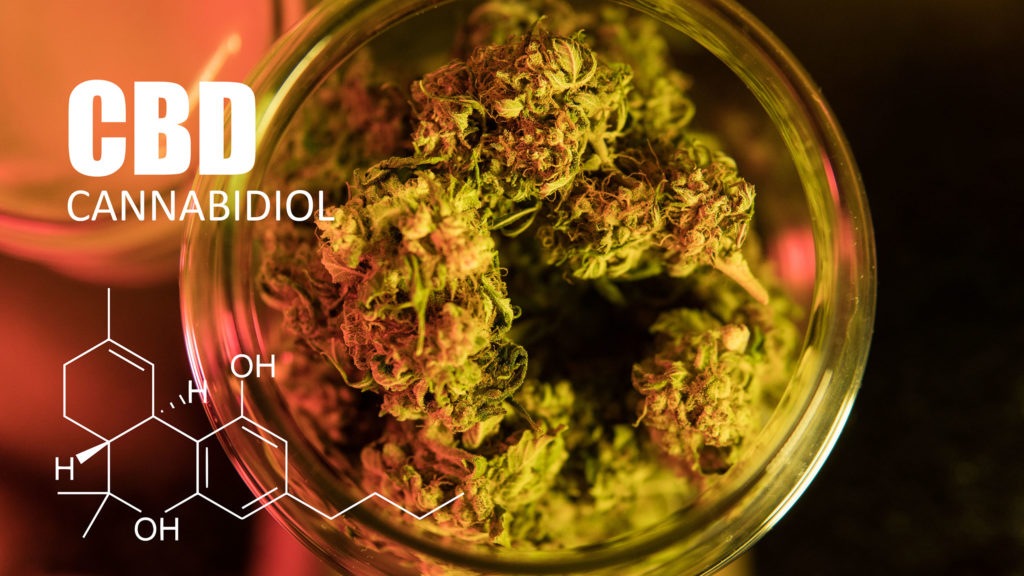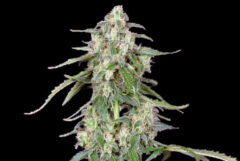Cannabis has been used as a sacrament in many cultures. The Rastafari culture is a perfect example. Is it possible that cannabis’ potential to incite introspection and reflective contemplation is the basis for the religious use of this plant? Even outside of these traditions, is there a way for everybody to harness these effects of cannabis?
“Knowing yourself is the beginning of all wisdom”
Aristotle
The Ancient Greek imperative, “Know yourself”, inscribed in the forecourt of the Temple of Apollo at Delphi, unquestionably confronts us with a task that can never be complete.

Nonetheless, the fact remains that we all know how rewarding and life-changing the path can be. Myriad consumers of marijuana, as well as consumers of other psychoactive substances like LSD or psilopsybin have reported instances of important insights into themselves – insights which significantly led to augment their self-knowledge and consequently, to their personal growth. On the basis of his questionnaires sent to hundreds of consumers, Harvard psychologist Charles Tart found the following to be a description of a characteristic effect of marijuana:
“Spontaneously, insights about myself, my personality, the games I play come to mind when stoned seem very meaningful.”
How could marijuana be especially helpful in gaining self-knowledge? How could it help us with our introspection?
‘Introspection’ in philosophy and in common sense
The Stanford Dictionary of Philosophy states:
“Introspection, as the term is used in contemporary philosophy of mind, is a means of learning about one’s own currently ongoing, or perhaps very recently past, mental states or processes.“
Our common-sense notion of „introspection“ seems to be much broader construed: we usually say that we can introspect not only mental states like a current pain sensation, feelings of anxiousness, or a joyful mood, but we often say that we introspect dispositions (like a tendency to overreact to critique) or other aspects of our personality like character traits.
As far as I can see, marijuana can be used to help both introspection in both senses. It seems to help users to better and more accurately feel bodily states like tactile sensations during sex, but it also seems to help with insights into one’s character traits, dispositions, and moods. In my first essay on introspection here I take a look at introspection in the first sense.
The body mapping system and the enhancement of bodily sensations
Charles Tart mentions that marijuana users feel that a high can help them to better introspectively access their current bodily sensations and feelings – which is, introspection in the more narrow philosophical sense. Many of the users surveilled confirmed the following effects as a „common“ effect of a marijuana high:
“My skin feels exceptionally sensitive”
“Pain is more intense if I concentrate on it”
“My perception of how my body is shaped gets strange; the ‘felt’ shape or form does not correspond to its actual form (e.g. you may feel lopsided, or parts of your body feel heavy while others feel light)”
“I feel a lot of pleasant warmth inside my body”
“I am much more aware of the beating of my heart”
“I become aware of breathing and can feel the breath flowing in and out of my throat as well as filling my lungs“
According to neuroscientists like A. D. Craig and Antonio Damasio, we all have an interoceptive sense which gives us a sense of the body’s interior. Accordingly, this inner sense rests on a representational mapping system (also called the somatosensory system”), which developed in order for us to observe our internal states such as:
“(…) pain states, body temperature, flush, itch, tickle, shudder, visceral and genital sensations; the state of the smooth musculature in blood vessels and other viscera (…).“
Could it be that marijuana interacts with this body mapping system? We also know that large doses of marijuana can lead to “body image distortions”, which are also often described in in literature.
In a report of a stoned experienced under the influence of a high dose of ingested hashish, the American writer Bayard Taylor(1825-1878) reports of an even stronger effect on his body image after swallowing a much bigger amount of ingested hash marmalade:
“The sense of limitation – of the confinement of our senses within the bounds of our own flesh and blood – instantly fell away. The walls of my frame were burst outward and tumbled into ruin; and, without thinking what form I wore – losing sight even of all idea of form – I felt that I existed throughout a vast extend of space. The blood, pulsed from my heart, sped through uncounted leagues before it reached my extremities; the air drawn into my lungs expanded into seas of limpid ether, and the arch of my scull was broader than the vault of heaven.”
This report shows that a marijuana high can strongly affect one’s body imaging system – and it also shows that it is a matter of dosage and use whether marijuana can help with introspection or not. Whereas a decent high might help with intensifying bodily sensations and bringing them to our awareness, a higher dose might lead to misrepresentations and distortions of our inner body mapping system.
Losing your body
Charles Tart also notes that under stronger dose of marijuana, users seem to forget about their bodies. He mentions the following descriptions as common effects for a strong high:
“I lose awareness of most of my body unless I specifically focus my attention there, or some particularly strong stimulus demands my attention there”
“I have lost all consciousness of my body during fantasy trips, i.e. gotten so absorbed in what was going on in my head that my body might as well not have existed for a while”
“I have lost all consciousness of my body and the external world, and I just found myself floating in limitless space (not necessarily physical space)”

How can we explain that? Could it be that marijuana actually stimulates other capacities such as imagination and episodic memories such that our attention sometimes gets strongly drawn away from our bodily sensations to fantasies or memories?

Endocannabinoids, exogenous cannabinoids, and the body imaging system
These observations raise interesting questions. How does marijuana effect the body mapping system? We know that other effects of marijuana strongly depend on its interaction with the already existing endocannabinoid system in our brain.
We also know, for instance, that endocannabinoids play a role when it comes to the process of thermoregulation – what are the other functions in the body mapping system? How do various endocannabinoids play a role in the regulation of the body mapping system? And how do exogenous cannabinoids – that is, cannabinoids coming externally by the consumption of cannabis – play a role affecting this system? Will a strain with higher level in CBD affect the body imaging system in a different way than other strains?
I am convinced that these questions might lead to really interesting developments in science and medicine. It’s high time to investigate.

“Once again the powers of the herb open up the mind. Seek deep inside. Tell me what you find.“
Cypress Hill III, Temples of Boom, ”Spark Another Owl”
Many users have observed how a marijuana high does not only lead them to introspective insights about bodily sensations, but also how it helped them to gain insights into their own personality and character. d
Pete Brady, a contributor to Lester Grinspoon’s website marijuana-uses.com, describes an enhancement of introspection under the influence of marijuana:
“The marijuana high made me introspective, and I used it to catalogue my strengths, weaknesses and traits. The drug was a revealer, not an escape mechanism; it helped me see who I was and what I needed to be.“
Another anonymous contributor („Twinkly“) to Grinspoon’s website reports:
“I was so much more tuned-in to myself and others. I could concentrate on my fears, my turmoil, my stress, my problems, and turn them into plans on healing and freeing myself from lifelong chains that had bound me. I felt calm and relaxed and capable of dealing with who I was, good or bad. (…) I am able to look deeper inside myself to make good, sound decisions based on my true beliefs and morals.”
These reports exemplify the kinds of emotional and “feeling” responses to the cannabis high. Though the writers did not specify physical sensations, it is possible that the hyperawareness of the physical body (the body mapping system) effectively leads to emotional understanding. This is how Antonio Damasio explains the cognitive and emotional effects of being aware of internal sensations.

Introspection as “reflective contemplation“
As to the introspection of moods, more complex emotions and character traits, it is obvious that this is not a kind of ‘direct’ inner observation. If I introspectively realize that I am a courageous person, I cannot just read this off an internal monitor.
I have to make a judgement involving the evaluation of many autobiographical memories, of „courageous“ patterns in my behaviour compared to the behaviour of others, a judgement that involves my understanding of the concept „courageous.“
We could also call this kind of introspection „reflective contemplation.“ A marijuana high might have several effects on cognition which could lead to those introspective judgements described by marijuana users.
Hyperfocus, enhanced episodic memory, imagination and pattern recognition
Let me briefly explain four effects of marijuana well known under marijuana users which are important here: the hyperfocus of attention, an enhanced episodic memory, enhanced imagination, as well as an enhanced pattern recognition.
One of the most important acute effects of marijuana is a hyperfocus in attention, an effect which I also like to call the „Zen – effect“ of marijuana, because Zen tells you to concentrate on one thing or activity at a time.
This attentional focus often leads to an intensified experience of bodily or other sensations and of a strong feeling of being in the here-and-now, but it can also lead to an hyperfocus on a stream of thought or on episodic memories – memories of past episodes in your life. Myriads of marijuana users have reported not only this hyperfocus, but also the enhancement of episodic memories. User often vividly remember past events – often long forgotten events – with incredible details.
Furthermore, it is a very commonly reported effect of a marijuana high that users can imagine things better – and importantly, imagination does not only mean visualization, but it could also be auditory, or tactile, taste or olfactory imagination.
Also, marijuana users have reported that during a high, they can better recognize all kinds of patterns. For instance, they can see a pattern in the behaviour of their friends that they have never seen before, or they can suddenly see in which ways Coltrane was influenced by Lester Young by recognizing certain patterns in style or sound.
Enhancement of “reflective contemplation“
Now, how could these four enhancements – a hyperfocus of attention, an enhanced episodic memory, an enhanced imagination, and an enhanced pattern recognition – affect our introspection? I think this is pretty easy to see. Let’s assume you are pondering over the question whether you are a courageous person.
A marijuana high can help to redirect and hyperfocus your attention on your episodic memories and your inner stream of thought. Now you can better search your episodic memories for instances in which you have acted courageously, or in which you failed to do so. You want to know about a character trait, not just about current mood or feeling, so you have to go back in time.
Your enhanced episodic memory during a marijuana high will help you to associatively bring up memories, and the enhanced pattern recognition ability can help you to find similarities between various courageous or not so courageous actions or feeling in the past.
Also, note how your enhanced ability for imagination might also play a crucial role for a success of reflective contemplation concerning your character trait: if you want to judge whether you are a courageous person in general, you do not only think about your past, but you try to imagine whether you would act courageously in certain situations. Would you jump into the ice-cold river from this big bridge to save that kid, just like this man did in the news?
During a marijuana high, you can often imagine situations like these more vividly and imagine how it would be for you, what you would actually feel, and how you would act. Thus, an enhanced capacity for imagination could be generally helping you to come to valuable insights about your dispositions and character traits, which is expressed in this statement by a college student:
“Pot is very therapeutic to me. When I’m stoned, I can really see myself. I can list my strengths and my weaknesses, and my goals. My mind is clear and eager to learn and understand, even when I have to understand awkward things, like those parts of my personality that I don’t want to change. I can see parts of myself that I don’t like, without hating myself in the process. I’ve learned things about myself that I have brought into my life when I haven’t been stoned, such as how to be less self-centred, and how to be more low-keyed about myself, and less anxious in the presence of others”.
As far as I can see, there are many reports of marijuana users which confirm the effects described here, but of course this is only a beginning. I hope that in the near future, cognitive neuroscientist will start looking more into the effects of marijuana high concerning attention, memory, pattern recognition and imagination, to clarify I which ways marijuana actually effects theses capacities.
- Disclaimer:Laws and regulations regarding cannabis use differ from country to country. Sensi Seeds therefore strongly advises you to check your local laws and regulations. Do not act in conflict with the law.










